Ryan Hall's Blog, page 356
September 4, 2015
Hayward Field Expansion in the Works

Photo: University of Oregon
The University of Oregon board of trustees is meeting next week to begin discussions on renovating historic Hayward Field.
The facility has numerous high-profile meets on its future schedule, none bigger than the IAAF World Championships in 2021. The renovations would begin next July after the U.S. Olympic Trials and would be “substantially” complete before the 2017 NCAA Track & Field Championships.
Among the upgrades:
Potential seating capacity would be expanded to 30,000. Currently, there are 10,500 permanent seats with options to expand to 20,000 through temporary seating.
The Bowerman Sports Science Clinic would be razed and re-built three times larger.
The Eugene Register-Guard reports that the west grandstand will be demolished and re-built even larger, while the historic east grandstand will be maintained.
“From the moment I set foot on campus, I could sense the significance of Hayward Field to our university and the community,” President Michael H. Schill said. “It is a place that embodies the spirit of the University of Oregon. Its storied history is intimately tied to the history of this great institution. This project will be a tribute to all who have enjoyed its grandeur as spectators or competitors, and to all who visit in the years to come.”
Tinker Hatfield, a well-known shoe designer for Nike, will be involved in the design of Hayward Field’s renovation.
In addition to the 2021 IAAF World Championships, Hayward Field will play host to all NCAA Track & Field Championships through 2021, and is being considered for the 2020 U.S. Olympic Trials as well. It also hosts the Prefontaine Classic, one of the top track meets in the U.S., each spring.
RELATED: University of Oregon Now Offers Campus Running Tours
The post Hayward Field Expansion in the Works appeared first on Competitor.com.
Nike Debuts New Versions of Old-School Cortez
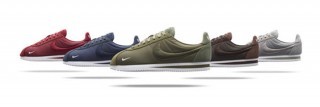
Nike has released modern versions of the Cortez, one of its original running shoes of the 1970s.
Back in February, Nike brought back its historic Cortez running shoe on a limited basis, perhaps as a way to test the market for the throwback trainer. The Cortez was one of the original models Bill Bowerman developed in the early days of Nike, one of the first shoes to feature a full-length midsole, dual-foam cushioning systems and nylon uppers.
It’s a shoe that Steve Prefontaine wore late in his career and became ubiquitous among joggers and teenagers in the 1970s. If you’ve seen the movie “Forrest Gump,” then you’ve seen the shoes. It’s the shoe Gump (Tom Hanks) laced up and wore on his across-the-USA running odyssey in that 1994 Oscar-winning film.
This week, Nike released a new textile version of the Cortez in a variety of colors for $130 at Nike.com and its Nike Lab stores in New York City and other international locations. Although it’s not meant to be a modern running shoe, the new versions could be a big hit with hipsters and sneaker freaks. The upper is made of traditional nylon quarter panels with premium suede and corduroy accents and both a large and small embroidered Swoosh logos.
On Sept. 24 Nike will unveil the ’72 Cortez, a replica version of the original shoe that debuted in February with a minimal leather upper, an iconic rubber toe cap and heel pull tab.
RELATED: Blast From the Past—Nike Bringing Back Its Cortez Shoe
The post Nike Debuts New Versions of Old-School Cortez appeared first on Competitor.com.
September 3, 2015
Tech Trends: Pre-Cooling To Take On A Hot Fall Marathon
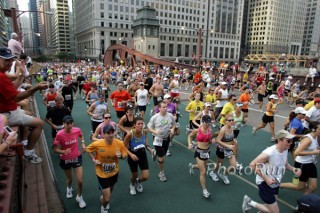
What can you do to be prepared to battle a hot day like the one marathoners faced in Chicago in 2007?
The excitement of race day is almost in sight for fall marathoners. Visions of huddling up in corals on a cool, autumn morning, falling golden-brown leaves and hitting each mile marker at goal race pace are bouncing around in their heads.
When thinking of a fall marathon, hot weather is not always something that comes to mind. If you need a reminder, do an Internet search for “2007 Chicago Marathon” and horror stories of high humidity and a temperature of 88 degrees that forced officials to close the course mid-race will pop up on your screen. Since that race in 2007, the high temperature on race day has been 80 or higher three other times in Chicago.
So what can you do to be prepared to battle a hot marathon day?
A few long runs in warm conditions during a marathon build up can help you acclimate and hydrating well before and during your marathon will go along way. The addition of a pre-cooling plan and some specific equipment can also help you be prepared to beat the heat.
Pre-Cooling
It’s widely accepted in scientific literature that body heat is a limiting factor in performance. Instead of relying on sweat to reduce body heat, pre-cooling methods help the body save energy and retain fluid by decreasing the skin and core temperature. Pre-cooling can improve performance in the heat by keeping the heart rate lower, decreasing sweat production and allowing the blood volume to be better maintained so oxygen can be better delivered to working muscles.
Scientific research is still being conducted to determine which forms of pre-cooling are the most effective. While the new Nike Magneto-style “cooling hood” is currently reserved for a few world-class athletes, there are a couple pieces of cooling technology used by the pros that, along with your preparation, can help reduce the negative effects of the heat and improve your marathon performance. The most practical methods of pre-cooling are ingesting ice slush and wearing a cooling vest. The focus here is on pre-cooling before your race because no one should run while wearing an ice vest and unless you’re an elite, you won’t be able to get a slushy at an aid station.
Ice Slush/Slushy
Yes, you read that correctly: making a slushy in your blender can help you perform better in hot conditions.
A number of scientific papers document how pre-cooling with a slushy improved the performance of endurance athletes in the heat. Studies suggest that when ingested, the crushed ice absorbs heat from the body’s core structures better than cold water. This allows for less of your body’s fluids to be needed for cooling through sweat and can be maintained in the blood to help deliver much-needed oxygen to muscles.
Regular water bottles generally won’t work well with slushy, so a specific bottle for pre-cooling is important. The easy to clean, slushy-specific Floe Bottle is a great option.
RELATED: Stay Cool With A Slushy
Cooling Vests
Cooling vests have been worn by world-class distance runners for over a decade. At the 2004 Olympic marathon in Athens, Meb Keflezighi and Deena Kastor went on to win silver and bronze medals, respectively. Both athletes performed their warmup wearing cooling vests and wore them up until a few minutes before the start of the race.
Once only available for elite level athletes, reusable cooling vests are available at a reasonable price for those serious about performing at their best in the heat. For example, the cooling vest by ArcticHeat is available in a variety of sizes for a cost of $225.
The post Tech Trends: Pre-Cooling To Take On A Hot Fall Marathon appeared first on Competitor.com.
Photos: The Relentlessly Steep Manitou Incline
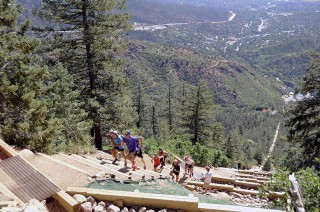
Situated near the base of Pikes Peak in Manitou Springs, Colo., the Manitou Incline rises more than 2,000 vertical feet in less than a mile. It’s a relentless test for any runner—as steep as 68 percent in some places—but that’s why runners from near and far have been running it for years. Once the site of an old tourist railway, it climbs more than 2,000 vertical feet in less than a mile. Mountain running legend Matt Carpenter has run the fastest known time (FKT) on the Incline (18:31) (although other unverified and unsubstantiated faster times have been reported), while Ali McLaughlin, a member of the 2014 U.S. Mountain Running Team, owns the fastest women’s time (20:07). Recently repaired and re-opened, the Incline is a true test of one’s fitness and leg strength. We documented Andy Wacker’s recent attempt to break the record with a group of Colorado Springs runners, including Peter Maksimow, Alex Nichols, Zach Smith, Brandon Stapanowich, Brent Bailey and McLaughlin.
RELATED: Video: The Allure of the Manitou Incline
Photo Gallery
1 of {count}
Back to Start
View Larger Image

The Manitou Incline
Andy Wacker sizes up the climb. Photo: Aric Van Halen
View Larger Image

The Manitou Incline
And they're off! Andy Wacker, Zach Smith, Alex Nichols and Brandon Stapanowich set off for some self-imposed torture. Photo: Brian Metzler
View Larger Image

The Manitou Incline
Wacker gets off to a conservatively fast start. Photo: Brian Metzler
View Larger Image
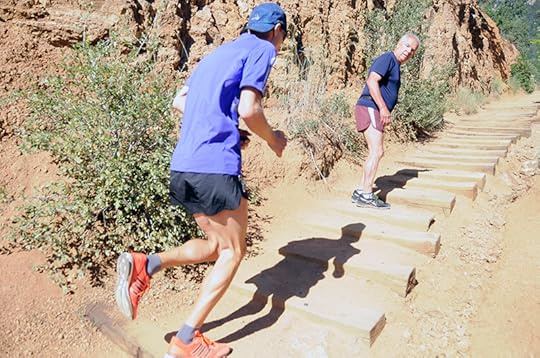
The Manitou Incline
Hikers, surprised to see someone running so fast, cleared the way for Wacker. Photo: Brian Metzler
View Larger Image

The Manitou Incline
Wacker easily dropped two of America's best mountain runners, Zach Smith and Alex Nichols by midway up the mountain. Photo: Brian Metzler
View Larger Image

The Manitou Incline
It's a long way to the top at just about any point on the Incline. Photo: Aric Van Halen
View Larger Image

The Manitou Incline
Wacker kept his form and rhythm all the way up the mountain. Photo: Aric Van Halen
View Larger Image

The Manitou Incline
Wacker smartly took it one step at a time. Photo: Brian Metzler
View Larger Image

The Manitou Incline
Although he missed the record, Wacker still ran a solid time of 19:59. He went on to place second in the Pikes Peak Ascent on Aug. 16 and then won the U.S. 50K trail running championship on Aug. 31 near San Francisco. Photo: Aric Van Halen
View Larger Image

The Manitou Incline
Nothing like high-angle repeats at 7,000 feet above sea level. After the time trial, Wacker, Smith, Allie McLaughlin and Nichols make sure their legs were really trashed. Photo: Brian Metzler
View Larger Image

The Manitou Incline
A close-up view of a high-intensity workout on the Incline. Photo: Brian Metzler
View Larger Image

The Manitou Incline
Peter Maksimow was so smooth going up, it's almost as if he was floating. Allie McLaughlin, the women's course record-holder, wasn't too shabby either. Photo: Brian Metzler
View Larger Image

The Manitou Incline
Here's what a vertical workout looks like from above. Photo: Brian Metzler
View Larger Image

The Manitou Incline
On any given summer day, the Incline attracts thousands of hardy hikers and a handful of courageous runners. Photo: Brian Metzler
View Larger Image

The Manitou Incline
Roger Austin is on the Incline every single day. The 50-year-old Manitou Springs runner recently completed his 1,101st ascent of the year, breaking the calendar-year record of 1,100 climbs set last year by Greg Cummings. Photo: Brian Metzler
View Larger Image

The Manitou Incline
The only secret to the Incline? Just keep putting one foot in front of the other. Oh, and it helps to look down at the steps, too. Photo: Brian Metzler
View Larger Image

The Manitou Incline
The Manitou training crew: Allie McLaughlin, Brendan Stapanowich, Brent Bailey, Andy Wacker, Zach Smith and Alex Nichols. Photo: Aric Van Halen
View Larger Image

The Manitou Incline
Related Galleries

Photos: Amazing Images from the 2015 Ultra-Trail du Mont-Blanc
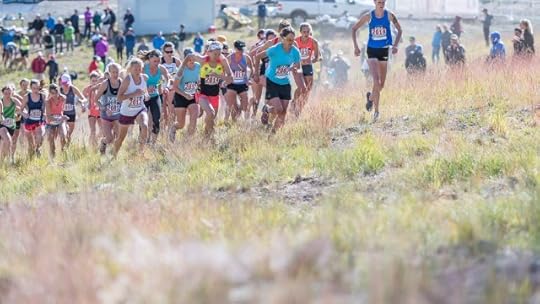
Photos: 2015 U.S. Mountain Running Championships
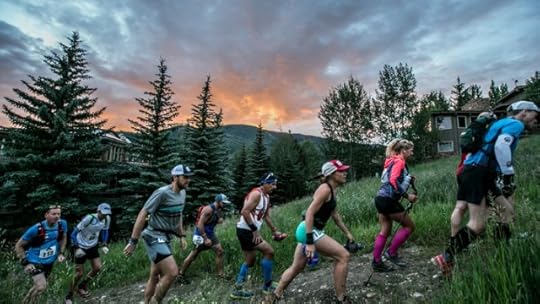
Photos: 2015 Audi Power of Four Trail

8 Off-Road Essentials

More Galleries
The post Photos: The Relentlessly Steep Manitou Incline appeared first on Competitor.com.
Video: The Allure of the Manitou Incline
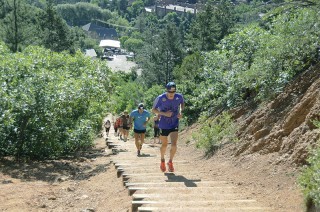
Photo: Brian Metzler
The Manitou Incline is the steepest running trail in Colorado, probably in the U.S. and maybe in the world. This unique training element along the lower flanks of Pikes Peak in the equally unique mountain hamlet of Manitou Springs, Colo., is an enormous challenge for any runner (or hiker), as it rises more than 2,000 vertical feet in less than a mile. Mountain running legend Matt Carpenter has run the fastest known time (FKT) on the Incline (18:31), although other unverified and unsubstantiated faster times have been reported. Ali McLaughlin, a member of the 2014 U.S. Mountain Running Team, owns the fastest women’s time (20:07).
In this video, we profile this one-of-a-kind trail with sweeping views and a ridiculous steep grade (up to 68 percent in some places!) and follow along as 2015 Pikes Peak Marathon runner-up Andy Wacker goes all-out in an attempt to set a new record.
PHOTOS: The Relentlessly Steep Manitou Incline
The post Video: The Allure of the Manitou Incline appeared first on Competitor.com.
Death to the Safety Pin? Alternatives for Runners are Plentiful
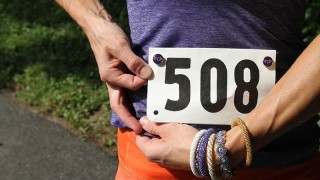
Products like RaceDots provide a safety pin alternative for racers. Photo: RaceDots
It’s a courageous challenge for an entrepreneur—launch a product against a direct competitor that both dominates the market and is free of charge most of the time.
How does one decide to go head-to-head against such a challenge?
For Jason Berry, the epiphany happened the night before a cycling race. As he was preparing his gear for the next morning, he grabbed four safety pins and his bib and was about to pin the race number to a brand new skinsuit.
“I couldn’t do it,” he said. “I didn’t want to put holes in it.”
He explored his house for an alternative, settling on four magnets stuck to his refrigerator. After getting praise at the next morning’s race, he perfected the magnets to make them both stronger and able to interlock. He then filed for three patents, and had great success crowdfunding his idea. RaceDots was born.
Some endurance athletes find safety pins to be an annoyance, and some even value their apparel enough to despise poking holes in it just to attach a bib on race day. There are even cases of rusty safety pins staining clothes.
But are there enough disgruntled athletes out there willing to fork over money for an alternative, when safety pins are provided for free by many races? That’s what Berry and other entrepreneurs are banking on.
RELATED: 10 Things That Can Go Wrong on Race Day
Across the pond in the United Kingdom, Mike Drage was frustrated that his favorite running top had a hole in it that was growing with each race due to safety pins.
“I thought about buying myself a new top for my birthday, “ Drage said, “then thought it would just get ruined again.”
About 18 months later, Drage launched EventClips, a two-piece plastic clip that snaps together and securely pinches the race top and bib number together. He claims that since his August 2013 launch, he’s sold more than 180,000 packs to runners, cyclists, triathletes and obstacle course racers. The flat facing can allow athletes and companies to customize their clips with logos, their names or any other small message—which has proven popular with running clubs, charities, sponsors and more. Like RaceDots, EventClips are reusable.
But they aren’t free. A pack of four EventClips retails for $2.99. RaceDots, featuring powerful interlocking magnets that never weaken, go for $19.99.
“I think everyone hates safety pins to a point that if you’ve got a little disposable money, you can throw (RaceDots) on the fridge when you’re not racing and use them year after year.” Berry said.
Berry, who runs RaceDots full-time out of his home in Virginia, says he has had about $250,000 in sales in 15 months since launching. RaceDots recently secured a shrewd partnership by sponsoring Michael Wardian, a serial racer known for wearing more race bibs than just about anyone. Despite a full-time career as a shipbroker, Wardian races nearly 50 times a year across a variety of distances and disciplines.
RELATED: Wardian Runs 2:31, 2:57 Marathons in One Day
RaceDots can be found in close to 50 running stores in the U.S. and Canada, as well as online. EventClips can be found online, in Up & Running stores in the U.K. (30 in all), and Drage is currently looking for distributors in the United States. Other safety pin alternatives are on the market, too. Race belts are popular among triathletes as a bib holder, and there’s even apparel on the market, like X Racewear, with a see-through pouch built-in to secure a bib without safety pins.
Clearly, many companies see a market ready to be served. But the cheapness of safety pins—plus the fact that many athletes don’t have a major issue with them—is a treacherous mountain to climb over.
But all of them think it’s a mountain they will eventually conquer.
“Once people get them in their hands,” Berry says of RaceDots, “they’re hooked.”
The post Death to the Safety Pin? Alternatives for Runners are Plentiful appeared first on Competitor.com.
Video: Stephanie Howe on Balancing Life and Running
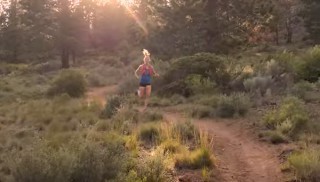
Stephanie Howe, who graces the September 2015 cover of Competitor, recently opened up on the truth behind the balance she constantly seeks in her life—as a professional runner, a wife, a nutritionist, a running coach and a student.
This video, by Nathan Sports and Trine Films, takes a closer look at Howe’s day-to-day life and how she manages to fit it all together. As Nathan states, “Lessons that she has learned through her journey in running can be applied by all of us as we seek our own forms of balance in a busy and demanding world.”
The post Video: Stephanie Howe on Balancing Life and Running appeared first on Competitor.com.
3 Ways to Make Up for a Missed Long Run

Photo: Shutterstock.com
This article first appeared on Women’s Running.
It’s happened to all of us: the long run on our schedule just doesn’t happen. Maybe the weather causes us to cut it short or we hit snooze and skip it altogether, leaving us a little stressed about when we’re going to make it up.
If you’re following a training plan, getting in those long runs can be a challenge sometimes. If you happen to miss one there is no need to panic. It’s ill-advised to skip to the next distance, considering that long runs can jump up by two miles at a time. For example—if you skip a planned 12 mile run, jumping from 10 miles to 14 can be problematic, opening the door for injury. Sometimes your plan may have enough wiggle room to adjust all the runs, but you may be on a tight schedule with race day fast-approaching.
Whatever your circumstances, here are three ways to make up that missed long run:
Split It. If you’ve logged at least a few miles of your long run and for whatever reason had to cut it short, there are a few options for finishing. Splitting a long run into two runs within a 12 hour period delivers the same results as one continuous long run. So if your plan called for 12 miles and you only manage to get in five, consider heading back out later on (after you have re-fueled and hydrated) for another seven. The other option, though not ideal, would be to run those 7 miles the next morning, giving you a total of 12 miles in a 24-hour period.
Midweek Make Up. It can be a challenge to squeeze in a long run during the weekday with a busy schedule. But if it is possible, swap out your hard effort for that week with your long run. If you’ve got a day where you run intervals, hills or a tempo run, replace that with your long run. If you’re training for a distance race like a half marathon or marathon, getting in the long run trumps those other workouts. If logging 12 miles in one chunk is too much, consider splitting the run as mentioned above.
Race+. Most training plans schedule a race prior to your goal race. If you’re willing to forego running at race pace but don’t want to skip the race itself, you can turn it into your long run. Let’s say you missed your 12 miler and decide to make it up the following weekend, bumping your 14 miler to what would have been a 10 mile race weekend. To turn that 10 miler into a long run, run two warm up miles before the race, run the race at an easy pace and then follow up the race with two cool down miles. This brings your total to 14 miles for the day. Running a race as part of your long run has it’s advantages. Water stops and the company of other runners will help make the miles fly by.
The post 3 Ways to Make Up for a Missed Long Run appeared first on Competitor.com.
Katie Hart Morse: Avoid These 10 Common Running Fails

When you try something new, things will go wrong—it happens. The magic comes in learning from your mistakes and moving on to the next milestone. Running has it’s own special set of fails especially when it comes to marathons. From training to racing, there’s a lot to learn, but many of the lessons are intuitive. Listen to your body, don’t ignore common sense and, hopefully, learn from the mistakes of others.
Read on for 10 common training and racing fails and how to overcome them.
Training Fails
Not fueling during long runs
There’s a lot of awareness about staying fueled during long runs, but I know many people who try to run on empty stomachs and always feel sick afterwards. Stay fueled to feel better, run faster and maintain energy levels.
Making every run hard
Often, once we start to see progress, we want to go farther or faster on every run. For progress to continue, keep the hard runs hard and the easy runs easy. I read this tip in an article about triathlete Linsey Corbin, and I’ve never forgotten it.
Trying to make up for missed runs
Training is never perfect. Know that missed runs happen, and that’s OK. Just move forward and focus on the next one.
Proper diet
What gives you gas, makes you feel bloated or causes a run to the restroom? Play around with different foods, and pay attention to how they make you feel. It’s important to determine what works for you, and avoid the things that don’t.
Doing too much
You don’t have to train like a pro runner to run a great marathon. Sometimes less is more, and most important of all is staying injury free. Listen to your body, and trust the process. You are going to do great!
Racing Fails
Starting out too fast
Seriously. I have been coaching and mentoring people for 10 years, and I have clients and friends who continue to repeat this mistake. You know your average pace time for long runs. Definitely use race day adrenaline to your advantage, but let it carry you through the whole day, not just at the beginning. Even though it’s easy to get caught up in the hype, start slightly slower than your goal time for the first couple miles to warm up. You’ll thank me later.
Nothing new on race day
How many times have you heard this? And yet, plenty of people will buy a new pair of shoes for race day, and even though they are the same style they wear, just a newer version, their feet end up hurting. Stick with what you know.
Not training with on course nutrition
Do a few runs with the same nutrition that’s offered on race day to see how your body reacts. It’s better to be prepared for the worst, than hope for the best.
Forgetting BodyGlide
Talk about a brutal shower. I had no idea Body Glide existed when I did my first marathon, and let me tell you, the chaffing was so bad, I hurt even when I was naked. Put Glide everywhere. Between your butt cheeks. Under your boobs. Around the waistband of your bottoms. Under your arms. On your triceps. Put it anywhere, where two things could possibly rub together. Try it or another anti-chafe product on your longer runs.
Having no post-race meet up plan
Make a plan for where to meet post-race, just in case your phone dies or you decide not to carry one. It’s no fun walking around more than you have to post-marathon.
The post Katie Hart Morse: Avoid These 10 Common Running Fails appeared first on Competitor.com.
Sarah Bowen Shea: Mind Games for Your Long Run

My best running friend, Molly, crushed her first marathon, literally cracking jokes at mile 20 and smiling much of the route. But the prior year, before she had to drop out of marathon training due to a knee injury, she admitted the mere thought of long runs almost paralyzed her with fear. Molly would wake up with dread in the pit of her stomach, leaving her feel nauseated and barely able to climb out of bed.
It takes a leap of faith it takes to set off on a long run. I can’t count how many times I’ve run 20 miles in training for my dozen marathons, yet even I feel a few butterflies banging around in my gut as I strap on my GPS watch and take a final swig of nuun. As I covered 20 miles, I conjured up these mind games to share with all of you who are running long this season:
Chunk it Up
This is the key to any run or race (or child’s birthday party, home renovation project, or PowerPoint presentation). When you try to contemplate it all at once, it’s overwhelming. You can slice-and-dice a run in countless ways, e.g. instead of thinking of it as 13 miles, tell yourself it’s 5 miles + 5 miles + 5K. Sure, you have to complete the entire distance (13 miles), but only focus on the segment you’re in. (Trust me, it eases the mental load.) Or break it up by roads: first, head along the waterfront, then get to the St. John’s Bridge, followed by covering a stretch of Willamette Boulevard. My sister from Another Mother Runner, Dimity, sometimes needs to parse things even smaller, counting out 100 steps or making it to the next street sign. Whatever works for you.
Switch Up Entertainment
If you listen to your podcasts or playlists on a run, “channel surf” your way through the miles. I usually start with the previous week’s episode of, “Wait, Wait…. Don’t Tell Me,” then shift to “This American Life.” Mock me, but I often then tune into our own podcast to have Dimity along for the ride for three or so miles. Finally, I switch to music. Sometimes a RockMyRun mix, sometimes a random shuffle from Spotify. Anything to keep things fresh.
Have Company
This is an obvious one: recruit a running buddy (or two or…) to join you. And don’t skip this suggestion just because no one you know is running long. I’ve had friends join me for the final half of a 20-miler, the first five of 15, the last three of 18—you name it. And I’ve also had friends ride their bike alongside of me. Get creative in who you ask, and where you go. No law against doing multiple mini-loops to ensure your pals can join you. (Oh, and if you can’t recruit any foot soldiers, follow my lead and stop at a friend’s house for a cold bottle of water–plus a few cubes in your sports bra. Salvation!)
Enjoy Bright Moments
Let’s just admit: No matter how lovely the scenery, a long run can be a grind. Well, call me a Pollyanna, but I look for little pick-me-ups wherever I can find them. The scent of pink roses climbing up a trellis. A friendly interchange with a cheerful mail carrier. The view from a bridge. A tasty GU.
Don’t Reflect Back
While it’s tempting to think back on the ground you’ve covered, it often makes me feel like a car running out of gas. Instead of feeling inspired, I find it daunting. But, let me tell you, sisters: the second my feet hit our driveway, I let out a whoop and let all the images of the miles come rushing into my mind, filling me with pride.
Don’t Confuse Boredom With Exhaustion
This mantra-like phrase came to me around mile 16 during a long effort. Late enough in the run to know I had the distance well in hand…but well past the point where I was b-o-r-e-d with running solo. When you’re “hurting,” ask yourself if your body feels extreme discomfort, or if you’re just wishing your run was over. I suspect it’s usually the latter. (In which case, suck it up—and remind yourself it’s better than playing Sorry! for the fifth straight time that morning.)
Do Mental Scans of Your Body
Not only is this a way to keep track of tension and potential trouble spots in your body and running form, but it also helps pass the time (and remind you that you’re really not as hurtin’ as you think you are). I do a scan, starting at my feet and working up. Along the way, I shake out my fist-like hands, drop my hunched shoulders, loosen my clenched jaw, and try to get the corners of my mouth to turn up.
Because, when all is said and done, there is joy in running long.
The post Sarah Bowen Shea: Mind Games for Your Long Run appeared first on Competitor.com.
Ryan Hall's Blog
- Ryan Hall's profile
- 21 followers



